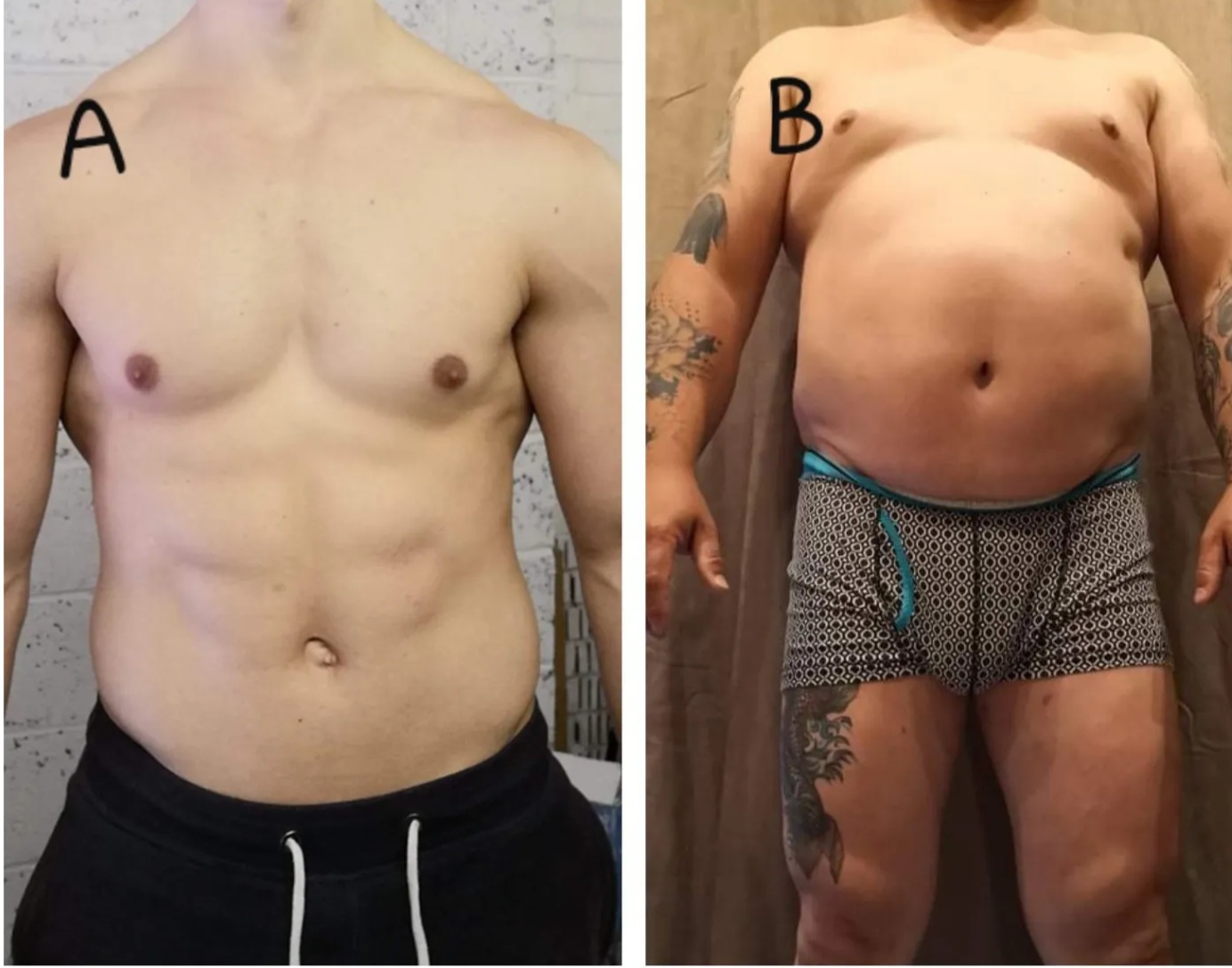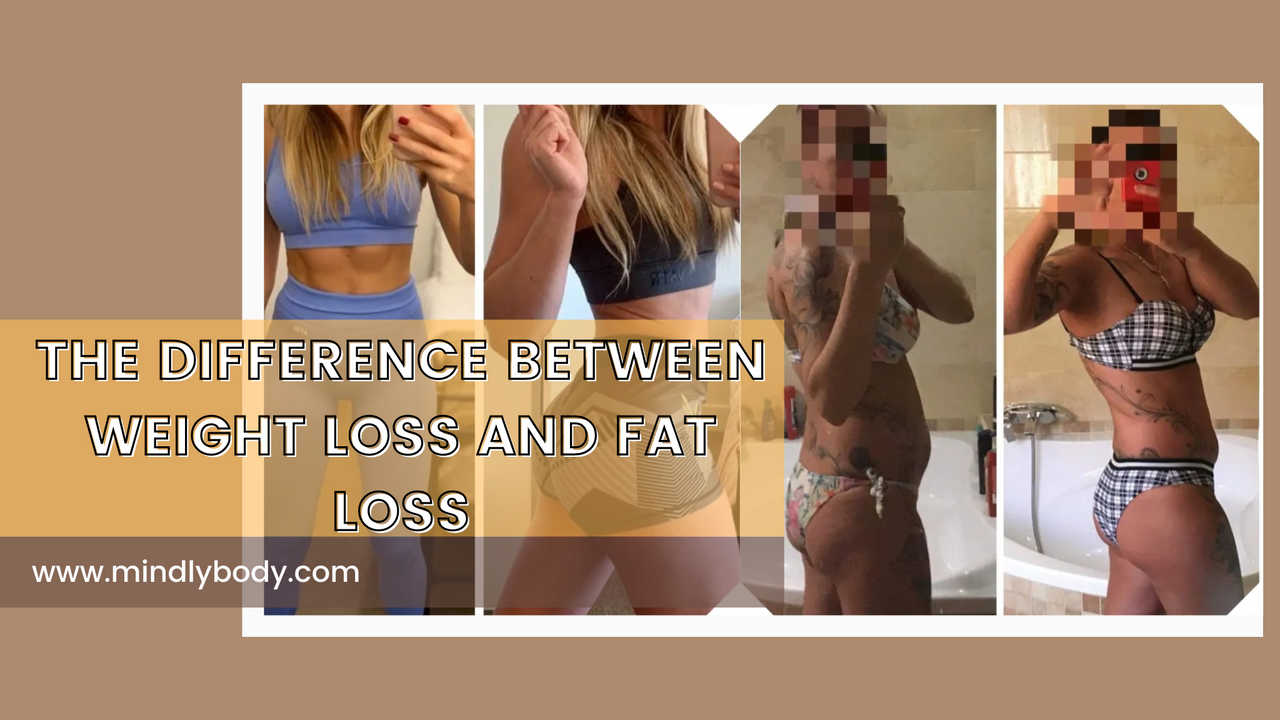Have you ever got frustrated about the numbers on the scale, when you have been consistently training?
Numbers are not always reflection of your hard work!
The difference between muscle and body fat

The man on picture A weights 90kg, and his height is 180cm. His BMI is 28, which is overweight. The man on picture B weights 100kg, and he is the same height as the other person, and his BMI is 31, which is obese. The difference between them is their body fat % and the amount of muscle they carry.
The man on the left is not overweight, but a healthy, well-built athlete with a body fat of 15-17% when the other man takes more body fat (over 30%).
Obesity is associated with heart disease, hypertension, diabetes, and other health problems. However, fat has never been listed as a reason for this. How many times has your GP taken your blood pressure or weight and looked at your BMI? Probably several times! Has he ever explained what the numbers mean? Most of the time they do not!
Now you understand the difference between losing weight or losing body fat. We have been offered so many ‘magic pills’ and miracle diets and weight loss tools that we don’t know anymore which way to turn. You have probably heard about the milk diet, the 500 Kcal diet, Slimming World, Weight Watchers, and the list is endless. Why are they not an effective way to lose body fat? A drastic drop in calories and increased exercise from 0 will surely bring you an extreme result even if those calories are consumed from ice cream. But for what price?
Your body will crave nutrients and more food, which won’t be sustainable in the long-term. You will sooner or later return into your old eating habits and regain or double the amount of weight you lost.
The weight loss is not meaningful unless the weight loss is later maintained by a healthy balanced diet and exercise program. Don’t look for instant solutions. Look for a life long goal!
Eat smaller portions more often. Aim for 0.5kg – 1kg / week weight loss. Complete at least 30 minutes of moderate exercise daily. Drastically dropping calories and avoiding valuable food sources forces your body to burn muscle and also lowers your resistance to disease. You won’t be able to build muscle and won’t be able to burn fat.
Let’s see a different example from a different perspective
The training style matters

The woman in this picture is 56 kg and 168 cm tall with BMI 20, body fat 15%.
The program I designed her was focusing on Hypertrophy (increasing muscle mass). It was made of weight training with few short but sharp intervals in the end to maximize fat burn. I also included stretching, resistance band workout for injury prevention, and a REST day. Her focus was glutes and abs.
As her body adapted quickly, she could not progress any further. She has done the same exercises with the same weight or very little change. We had to progressively overload (gradually changing the weights and reps) to challenge and grow those muscles. We have focused on Time under Tension (how long it takes to lift and lower the weight) too. This gave her a new challenge, so she can keep progressing further.
The woman in this picture is 170 cm tall; her starting weight was 64 kg. Then, 26 days later It came down to 59 kg with BMI 20 and a body fat of 23%. Her program was focusing on fat loss and adding muscles. As you can see, we have successfully reduced body fat and shaped those muscles. She did not have access to a gym, I designed for her a home workout using her own body weight and resistance bands. We also had a big focus on food intake to pick up healthy habits for long-term results. She has a job where she works 12 hours a day, a son to raise, so she had very little time to train
Basal Metabolic Rate
Both ladies are beautiful! What I wanted to point out here is their training style and how increasing muscle mass can help with Basal Metabolic Rate (BMR). Basal Metabolic Rate is the number of calories required to keep your body functioning at rest, including digestion, heart rate, blood circulation, temperature, etc.
The more muscles you have, the higher your energy expenditure is while resting. It also increases your metabolism, as muscle tissue is metabolically more active than body fat. If you are a beginner, resistance bands and body weight training is a great way to start. It does not require a gym, and you can do it anytime! Do not rely on the scales. Take measurements of your waist (around the belly button) and your hip.
Take pictures from a different angle so when you look back, you will just say: WOW
